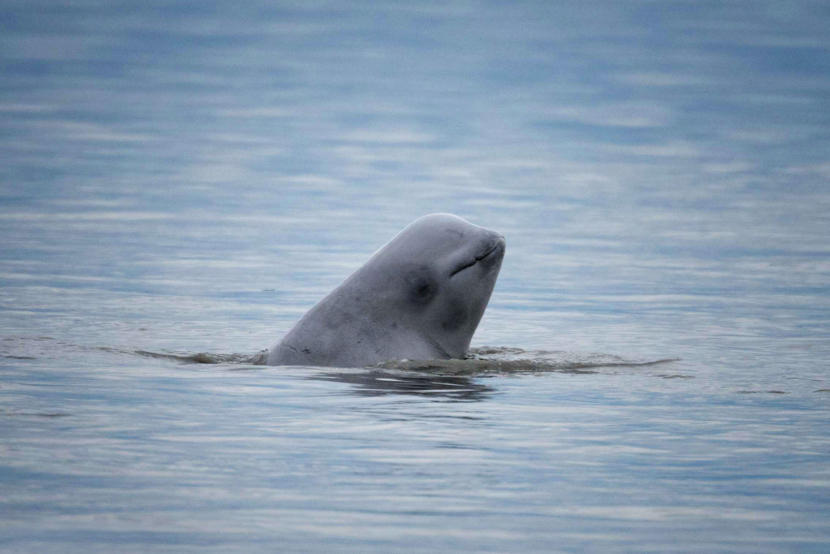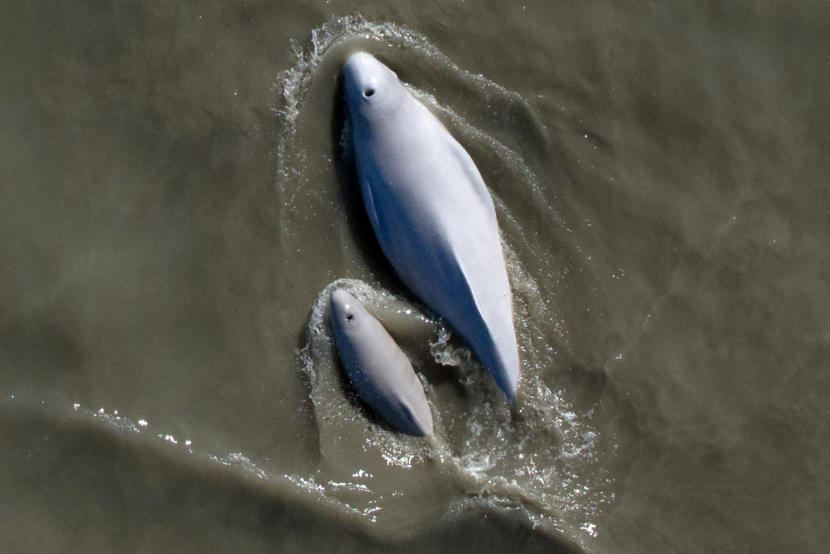
The decline of the white whales in the inlet in view of Anchorage has been going on for decades.
In the 1970s they numbered around 1,400. In 2008, Cook Inlet belugas were listed as endangered, and still the numbers continued to drop. With new analysis methods today, there are even fewer whales than previously thought — less than 300, and steadily declining from there.
Still, the reasons why Cook Inlet belugas are disappearing are still largely a mystery to researchers.
“It’s such a frustration to not be able to really understand why the population is not recovering,” said Paul Wade, a National Oceanic and Atmospheric Administration researcher who has done aerial surveys of Cook Inlet belugas since the 1990s. “So we are just stuck with hypotheses that we really cannot yet prove or disprove.”
Wade and other researchers have a number of theories for why they’re disappearing, from direct human interaction to climate change disrupting their food source.
“I think the reduction in prey is something that we have a little more concern and want more information about, given … declines in salmon in Alaska, including some of the salmon runs in Cook Inlet,” he said.
Cook Inlet is also just really loud. Passenger and cargo jets roar into Anchorage multiple times a day. Container ships deliver food and consumer goods to the busy port. Cruise ships travel through in the summers, and a railroad follows the inlet down the coast.
All of these can interfere with belugas’ echolocation — the clicking, chirping and whistling noises they make to “see” through the murky water.
Wade said sound interference can make it harder for them to find prey and may prevent them from entering certain parts of their habitat. A loud environment can also make it more difficult for a calf to call for its mother, potentially separating a young whale from its mom, he said.

Environmental advocates have blamed some of the sound disturbance on drilling activities in Cook Inlet.
Last fall, the Center for Biological Diversity sued the National Marine Fisheries Service, also known as NOAA Fisheries, for authorizing Hilcorp’s oil and gas activities in the area. The conservation group says that’s in violation of the Endangered Species Act protecting the belugas.
Center for Biological Diversity lawyer Julie Teel Simmonds said seismic surveys and pile driving can reach up to 250 decibels, threatening beluga health.
“What you see is death by a thousand cuts for these kinds of species like belugas,” she said. “It is just a cumulative approval of these projects one by one, with the government and the industry unwilling to look at the picture as a whole and say, ‘This species is not going to make it, and together these activities are killing the Cook Inlet beluga.’”
NOAA Fisheries told KTUU last month that the limitations in place are sufficient, even with the further decline in belugas.
Hilcorp did not respond to a request for comment in time for broadcast.
Part of the reason scientists haven’t been able to narrow down the reasons for the Cook Inlet beluga decline is that they’re very difficult to study. Cook Inlet has silty, opaque water that makes the whales difficult to photograph in the water — much of Cook Inlet beluga research has to be done from the air.
Even studying washed up belugas is tricky. Kathy Burek, a veterinary pathologist based in Anchorage, remembers studying one beluga that died from choking on a flounder, but beyond that she said it’s hard to remember any with a distinct cause of death.
“Whales get rotten really fast. And once they start getting rotten, you can’t do a lot of the testing that you do to see if they died of an infectious disease.” It’s frustrating, Burek said, but “The vast majority of time, I don’t know why they died.”
Cook Inlet belugas are a genetically distinct population, separated from the nearest other cluster of Alaskan belugas — in Bristol Bay — by hundreds of miles. Wade said that if this population were to go extinct, it’s very unlikely that other white whales would swim over to take their place.
NOAA has an ongoing acoustic monitoring effort to study beluga movements in Cook Inlet and try to explain the decline. The next aerial survey is scheduled for this summer.
